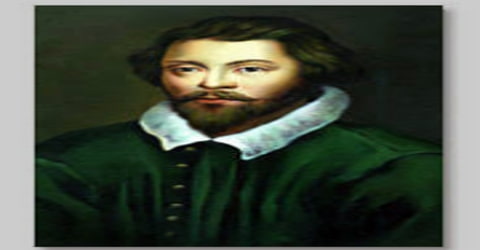Biography of William Byrd
William Byrd – English composer of the Renaissance.
Name: William Byrd
Date of Birth: 1539/40
Place of Birth: London, England
Date of Death: July 4, 1623
Place of Death: Stondon Massey, Essex, England
Occupation: Composer
Father: Thomas Byrd
Mother: Margery
Spouse/Ex: Julian Birley (m. 1568)
Children: Seven
Early Life
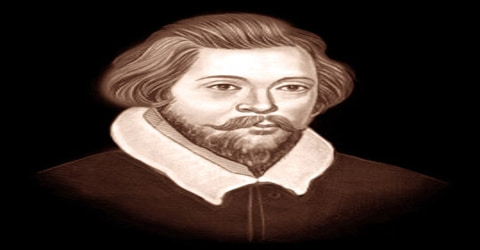
A noted English composer remembered as much for his Latin sacred music as for his works on English madrigal, William Byrd was born 1539/40, London, England to Margery and Thomas Byrd. He was an English organist and composer of the Shakespearean age who is best known for his development of the English madrigal. He also wrote virginal and organ music that elevated the English keyboard style.
A famous composer of the Renaissance era, in London, he began his training in music at the age of seven. Later he became a chorister at the Chapel Royal and began composing music while being trained under Thomas Tallis. He began his career as the Master of Children at the Church of Lincoln and then became the Gentleman of the Chapel Royal. Over his extensive career, he wrote varied types of music. His position in the Chapel Royal enabled him to come in close contact with both the Royalty and the noblemen at the Court, many of whom later became his patrons.
Queen Elizabeth I, despite Byrd’s intense commitment to Catholicism, was one of his benefactors and granted him and Tallis a patent to print music in 1575. Their first publication was a collection of five- to eight-part, Latin motets, but they published little else. Around the same time, Byrd began composing for the virginal. His contribution to the solo keyboard repertoire comprises some 125 pieces, mostly stylized dances or exceptionally inventive sets of variations which inaugurated a golden age of English keyboard composition.
He wrote in many of the forms currents in England at the time, including various types of sacred and secular polyphony, keyboard (the so-called Virginalist school), and consort music. Although he produced sacred music for Anglican services, sometime during the 1570s he became a Roman Catholic and wrote Catholic sacred music later in his life.
Childhood, Family and Educational Life
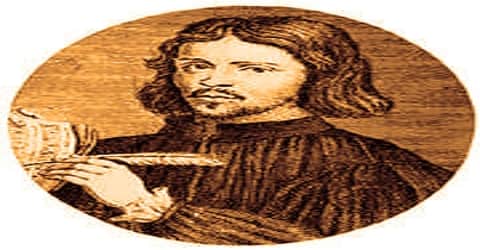
William Byrd was born on 1539/40 in London into a family of gentlemen, the lowest rank of English gentry. His father, Thomas Byrd, was a little-known musician. His mother’s name was Margery Byrd. There were seven children in the family. William’s two older brothers, Symond and John, sang in the choir at St. Paul’s Cathedral. It’s therefore likely that William received some sort of musical training from a young age.
The specific year of Byrd’s birth is uncertain. In his will, dated 15 November 1622, he describes himself as “in the 80th year of my age”, suggesting a birthdate of 1542 or 1543. However, a document dated 2 October 1598 written in his own hand states that he is “58 years or ther abouts”, indicating an earlier birthdate of 1539 or 1540. Byrd had two brothers, Symond and John, who became London merchants, and four sisters, Alice, Barbara, Mary, and Martha.
Although the brothers grew up to be London merchants, all three of them began their training in music at the age of seven. Later Symond and John joined the choir of St. Paul Cathedral while William became a chorister at the Chapel Royal. Here he received training under the Master of Children Thomas Tallis, who was also a famed composer.
During this period young Byrd composed a number of pieces. Among them, one on psalm ‘In exitu Israel’ was composed with John Sheppard and William Mundy. Other than that, it is possible that he may have also composed pieces on ‘Easter responsory Christus resurgens’ and ‘Alleluia confitemini.’
Byrd had the good fortune to become a pupil of Thomas Tallis, the most prominent and talented composer in 16th century London. Byrd studied organ and composition with Tallis. He and Tallis would become lifelong friends and business associates.
Personal Life
On 14 September 1568, Byrd married Julian Birley and had at least seven children with her. They had a long and fruitful married life and lived together until her death in 1608/1609.
Career and Works
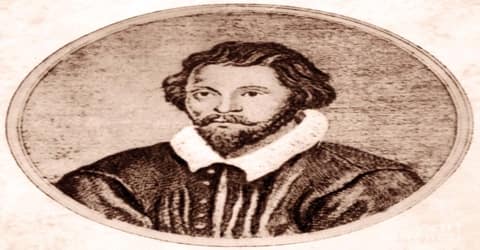
In 1563, Byrd was appointed organist at Lincoln Cathedral. He met and married Julian Birley there. They had several children, including one named Thomas, after Thomas Tallis. While serving at Lincoln Cathedral, Byrd composed numerous pieces for choir, viol, and keyboard. These works show an Italian influence and are written in a polyphonic style. Polyphonic music has more than one melody of equal importance sounding simultaneously.
His tenure at Lincoln was musically very productive. His ‘Short Service’, with clear words and simple musical texture, was written during this period. Other than that, he also wrote a number of extensive keyboard fantasias and composed a few songs for voice. ’Ground in Gamut’, ‘The Hunt’s Up’, ‘Gypsies’ Round’ are some of his well-known creations of this period. Besides, historians have reasons to believe although they were published later motets like ‘Libera me’, ‘Domine’, ‘de morte aeterna’, and ‘Attollite portas’ were produced during this time.
Byrd’s period at Lincoln was not entirely trouble-free, for on 19 November 1569 the Dean and Chapter cited him for ‘certain matters alleged against him’ as the result of which his salary was suspended. Since Puritanism was influential at Lincoln, it is possible that the allegations were connected with over-elaborate choral polyphony or organ playing. A second directive, dated 29 November, issued detailed instructions regarding Byrd’s use of the organ in the liturgy.
He returned to London in 1572 and was appointed organist at the Chapel Royal, a position he shared with Thomas Tallis. Together, they provided the worship music for the royal household. Queen Elizabeth, perhaps in a show of gratitude, granted the two composers a monopoly on the printing of music. They immediately published a collection of sacred songs dedicated to the Queen.
In 1575 Elizabeth I granted them a joint monopoly for the importing, printing, publishing, and sale of music and the printing of music paper. The first work under their imprint appeared in that year a collection of Cantiones sacrae dedicated to the queen; of the 34 motets, Tallis contributed 16 and Byrd 18.
The 1560s were also important formative years for Byrd the composer. His Short Service, an unpretentious setting of items for the Anglican Matins, Communion and Evensong services, which seems to have been designed to comply with the Protestant reformers’ demand for clear words and simple musical textures, may well have been composed during the Lincoln years. Byrd had also taken serious strides with instrumental music. The seven In Nomine settings for consort (two a4 and five a5), at least one of the consort fantasias (Neighbour F1 a6) and a number of important keyboard works were apparently composed during the Lincoln years. The latter include the Ground in Gamut (described as “Mr Byrd’s old ground”) by his future pupil Thomas Tomkins, the A minor Fantasia, and probably the first of Byrd’s great series of keyboard pavanes and galliards, a composition which was transcribed by Byrd from an original for five-part consort. All these show Byrd gradually emerging as a major figure on the Elizabethan musical landscape.
Byrd was a prodigious composer. He wrote music for every genre of his day. There are volumes of sacred songs suitable for both Catholic and Anglican worship. There are secular songs in English. There are pieces for choir, pieces for soloists accompanied by viols, pieces for viol ensembles, and collections of compositions for keyboard. In all of these genres, he did outstanding work.
Some sets of keyboard variations, such as The Hunt’s Up and the imperfectly preserved set on Gypsies’ Round also seem to be early works. As we have seen, Byrd had begun setting Latin liturgical texts as a teenager, and he seems to have continued to do so at Lincoln. Two exceptional large-scale psalm motets, Ad Dominum cum tribularer (a8) and Domine quis habitabit (a9), are Byrd’s contribution to a paraliturgicall form cultivated by Robert White and Robert Parsons. De lamentatione, another early work, is a contribution to the Elizabethan practice of setting groups of verses from the Lamentations of Jeremiah, following the format of the Tenebrae lessons sung in the Catholic rite during the last three days of Holy Week. Other contributors in this form include Tallis, White, Parsley and the elder Ferrabosco. It is likely that this practice was an expression of Elizabethan Catholic nostalgia, as a number of the texts suggest.
In 1577 Byrd and his family moved to Harlington, Middlesex. As a devout lifelong Roman Catholic, he probably preferred the greater privacy of living outside London. Yet, in spite of his close social contact with many other Catholics, some of whom were certainly implicated in treasonable activities, his own loyalty to the government was never questioned.
In 1575, Queen Elizabeth I jointly granted them patent for the importing, printing and publishing of music and ruled music paper. Taking its advantage, they jointly published ‘Cantiones quae ab argumento sacrae vocantur’, a collection of 34 Latin motets dedicated to Queen Elizabeth I.
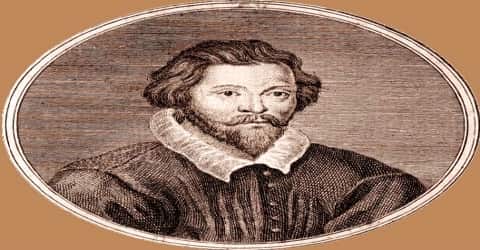
Byrd’s contributions to the Cantiones are in various different styles, although his forceful musical personality is stamped on all of them. The inclusion of Laudate pueri (a6) which proves to be an instrumental fantasia with words added after composition, is one sign that Byrd had some difficulty in assembling enough material for the collection. Diliges Dominum (a8), which may also originally have been untexted, is an eight-in-four retrograde canon of little musical interest. Also belonging to the more archaic stratum of motets is Libera me Domine (a5), a cantus firmus setting of the ninth responsory at Matins for the Office for the Dead, which takes its point of departure from the setting by Robert Parsons, while Miserere mihi (a6), a setting of a Compline antiphon often used by Tudor composers for didactic cantus firmus exercises, incorporates a four-in-two canon. Tribue Domine (a6) is a large-scale sectional composition setting from a medieval collection of Meditationes which was commonly attributed to St Augustine, composed in a style which owes much to earlier Tudor settings of votive antiphons as a mosaic of full and semichoir passages. Byrd sets it in three sections, each beginning with a semichoir passage in archaic style.
In 1577 Byrd and Tallis were forced to petition Queen Elizabeth for financial help, pleading that the publication had “fallen oute to oure greate losse” and that Tallis was now “verie aged”. They were subsequently granted the leasehold on various lands in East Anglia and the West Country for a period of 21 years. Also in 1577, Byrd moved away from London to Harlington in Middlesex. Although Byrd was born Protestant, by early 1570s, he had begun to lean increasingly towards Roman Catholicism. In 1777, the very year they moved to Harlington, his wife was cited as recusant.
In spite of it, Byrd’s loyalty to the crown was never doubted. However in 1583, he got into serious trouble for his association with many Catholic noblemen, suspected of involvement with Throckmorton Plot and in 1584, his name too was included in the recusant list.
The death of Tallis in 1585 may have prompted Byrd to set his musical house in order, for in the next three years he published four collections of his own music: Psalmes, Sonets, & Songs of Sadnes and Pietie (1588), Songs of Sundrie Natures (1589), and two further books of Cantiones sacrae (1589 and 1591). The two secular volumes were dedicated, respectively, to Sir Christopher Hatton, the Lord Chancellor, and to Henry Carey, 1st Baron Hunsdon, the lord chamberlain and first cousin to the queen. Both volumes of motets were dedicated to prominent Catholics: Edward Somerset, 4th earl of Worcester, a great friend and patron of Byrd’s, whose loyalty to the crown was unimpeachable, and John Lumley, 1st Baron Lumley.
During the 1580s and 1590s, Byrd’s Catholicism was the driving motive for his music. As the persecutions of Catholics increased during this period, and occasionally touched on Byrd and his family, he wrote and openly published motets and three masses (one each in three, four, and five parts), which are his finest achievement in sacred music, almost certainly composed for small chapel gatherings of Catholics. Byrd had taken up the publishing business again, printing the first English songbook, Psalmes, Sonets, and Songs in 1588. This and his other songbooks include Byrd’s compositions in the leading secular genres of the day: the ayre or lute song, the madrigal, and the consort song for solo voice and viols. The consort song’s finest hour came at the hands of Byrd, who preferred texts of a high moral (frequently religious) or metaphysical tone. They are notable for the way the viol parts lead an existence independent of the vocal line.
Byrd’s contribution to the Cantiones also includes compositions in a more forward-looking manner which point the way to his motets of the 1580s. Some of them show the influence of the motets of Alfonso Ferrabosco I (1543–1588), a Bolognese musician who worked in the Tudor court at intervals between 1562 and 1578. Ferrabosco’s motets provided direct models for Byrd’s Emendemus in Melius (a5), O lux beata Trinitas (a6), Domine secundum actum meum (a6) and Siderum rector (a5) as well as a more generalised paradigm for what Joseph Kerman has called Byrd’s ‘affective-imitative’ style, a method of setting pathetic texts in extended paragraphs based on subjects employing curving lines in fluid rhythm and contrapuntal techniques which Byrd learnt from his study of Ferrabosco.
Also in 1591 a manuscript volume of Byrd’s keyboard music was prepared for “my Ladye Nevell” (probably Elizabeth, wife of Sir Henry Neville), and many more keyboard pieces found their way into the early 17th-century volume known as the Fitzwilliam Virginal Book, copied by another well-known Catholic, Francis Tregian, during his imprisonment in the Fleet Prison.
Apart from these, Byrd also wrote significant numbers of consort pieces out of which the ‘Browning’ and the ‘Goodnight Ground’ were most significant. However, music historians are of the opinion that he had written a few more, but their manuscripts were lost.
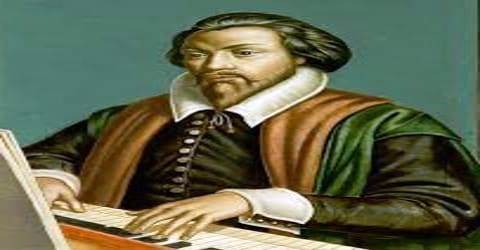
In 1583 Byrd got into serious trouble because of his association with Paget, who was suspected of involvement in the Throckmorton Plot and for sending money to Catholics abroad. As a result of this, Byrd’s membership of the Chapel Royal was apparently suspended for a time, restrictions were placed on his movements, and his house was placed on the search list. In 1586 he attended a gathering at a country house in the company of Father Henry Garnett (later executed for complicity in the Gunpowder Plot) and the Catholic poet Robert Southwell.
When in 1603, James I succeeded Elizabeth I to the English throne, life for the Catholics became temporarily better. Byrd took the opportunity to publish the three masses he had written earlier. Subsequently, in 1605 and 1607, he published two books of ‘Gradualia’. These two books mainly consisted of settings of the Proprium Missae for the major feasts of the church calendar. Thus they actually supplement the Mass Ordinary cycles published earlier. However, they did not become as popular as his earlier works.
These volumes contain short sacred songs that are used in the Proper of the Roman Catholic Mass. The Proper consists of the sections of the Mass that have different text for each day. Byrd set these texts in such a way that the different pieces of the Proper would fit together musically, supporting each other and complementing each other. Prior to this, Proper texts were a bit of a mash-up, combining some music from here, some music from there, with no concept of the sections creating a musical whole.
In spite of anti-Catholic sentiments, Byrd republished the ‘Gradualia’ with new title pages in 1610. At the same time, he also wrote a few pieces for the Anglican Church.
In 1583 De Monte sent Byrd his setting of verses 1–4 of Vulgate Psalm 136 (Super flumina Babylonis), including the pointed question “How shall we sing the Lord’s song in a strange land?” Byrd replied the following year with a setting of the defiant continuation, set, like de Monte’s piece, in eight parts and incorporating a three-part canon by inversion. Thirty-seven of Byrd’s motets were published in two sets of Cantiones sacrae, which appeared in 1589 and 1591. Together with two sets of English songs, discussed below, these collections, dedicated to powerful Elizabethan lords (Edward Somerset, 4th Earl of Worcester and John Lumley, 1st Baron Lumley), probably formed part of Byrd’s campaign to re-establish himself in Court circles after the reverses of the 1580s.
His last collection, Psalmes, Songs and Sonnets from 1611, consisted mostly of previously published works but did include two of his viol consort works. Byrd is at his most distinguished in the free fantasias for consort, particularly the later pieces in five and six parts, works of exceptionally luxurious texture.
During his later years, Byrd also added to his output of consort songs, a number of which were discovered by Philip Brett and Thurston Dart in Harvard in 1961. They probably reflect Byrd’s relationship with the Norfolk landowner and music-lover Sir Edward Paston (1550–1630) who may have written some of the poems. The songs include elegies for public figures such as the Earl of Essex (1601) and Henry Prince of Wales (1612). Others refer to local notabilities or incidents from the Norfolk area.
Subsequently, Byrd began to slow down. In the winter of 1612-1613, Byrd wrote eight keyboard pieces for ‘Parthenia’, a collection of 21 keyboard pieces issued on the occasion of James I’s daughter Princess Elizabeth’s wedding. In 1614, he contributed four English anthems to Sir William Leighton’s ‘Teares or Lamentacions of a Sorrowfull Soule’, a collection of fifty-five pieces by twenty-one composers. It was his last published work.
Byrd remained in Stondon Massey until his death on 4 July 1623, which was noted in the Chapel Royal Check Book in a unique entry describing him as “a Father of Musick”. Despite repeated citations for recusancy and persistent heavy fines, he died a rich man, having rooms at the time of his death at the London home of the Earl of Worcester.
In his collection of three masses and two books of Gradualia (1605 and 1607), he attempted to single-handedly provide a basic liturgical repertory, comprising music for the Ordinary (i.e., the unvarying parts of the mass) and for the Proper (i.e., the parts of the mass that vary according to the day or the feast) of all main feasts. It is significant that the dedicatees of both books of Gradualia were prominent Catholics ennobled within the first years of James’s reign: Henry Howard, Earl of Northampton, and John Petre, 1st Baron Petre, another close friend of Byrd’s. One further publication came from Byrd, the Psalmes, Songs and Sonnets of 1611, containing English sacred and secular music.
Awards and Honor
Byrd is also honored with a feast day (21 November) on the liturgical calendar of the US Episcopal Church.
Death and Legacy
Byrd’s last songs were published in 1614, and he lived out his life comfortably at Stondon Massey, where he died on July 4, 1623. In an entry that marked his death in the Chapel Royal Check Book, he was described as “a Father of Musick”.
Byrd’s output of about 470 compositions amply justifies his reputation as one of the great masters of European Renaissance music. Perhaps his most impressive achievement as a composer was his ability to transform so many of the main musical forms of his day and stamp them with his own identity. He also raised the consort song, the church anthem and the Anglican service setting to new heights. Finally, despite a general aversion to the madrigal, he succeeded in cultivating secular vocal music in an impressive variety of forms in his three sets of 1588, 1589 and 1611.
Although Byrd had written many English pieces, he is best remembered for his Latin sacred music. The two sets of ‘Cantiones sacrae’, published in 1589 and 1591 can be considered the best among his works. These were mostly written for private use in the Catholic circles where they allowed him to write freely without any liturgical considerations.
Byrd’s religious beliefs did not prevent him from composing a great deal of church music to English words, most of which have survived only in manuscript. Although this is of generally high quality, it cannot be denied that Byrd maintained the highest consistent level in his Latin sacred music. Of this, the 1589 and 1591 sets of Cantiones sacrae (mostly designed for the private edification of the Catholic circles Byrd moved in and therefore unrestricted by liturgical considerations) have an intensity unrivaled in England and a breadth of scale unknown on the Continent. Although the Gradualia are necessarily more concise and superficially more similar to the work of Giovanni Pierluigi da Palestrina and Tomás Luis de Victoria, with which Byrd was well acquainted, closer examination reveals their real individuality as well as an astonishingly consistent level of inspiration.
Despite the financial failure of the publication, some of his other collections sold well, while Elizabethan scribes such as the Oxford academic Robert Dow, the Windsor lay clerk John Baldwin, and a school of scribes working for the Norfolk country gentleman Sir Edward Paston copied his music extensively. Dow included Latin distichs and quotations in praise of Byrd in his manuscript collection of music, the Dow Partbooks (GB Och 984-988), while Baldwin included a long doggerel poem in his Commonplace Book (GB Lbm Roy App 24 d 2) ranking Byrd at the head of the musicians of his day:
Yet let not straingers bragg, nor they these soe commende,
For they may now geve place and sett themselves behynde,
An Englishman, by name, William BIRDE for his skill
Which I shoulde heve sett first, for soe it was my will,
Whose greater skill and knowledge dothe excelle all at this time
And far to strange countries abrode his skill dothe shyne…
In music for viol consort he also played an extremely important role, pioneering the development of the freely composed fantasia, which was to become the most important form of Jacobean and later composers. Although he admired Italian madrigals and as a publisher helped introduce them to England, Byrd’s own secular vocal music is distinctly conservative; much of it is conceived for the old-fashioned medium of solo voice accompanied by viol consort, which was later abandoned by the English madrigalists, with Thomas Morley (Byrd’s pupil) at their head. Byrd sometimes added texts to the polyphonic accompaniments of these songs, in effect making them madrigals.
Information Source:
